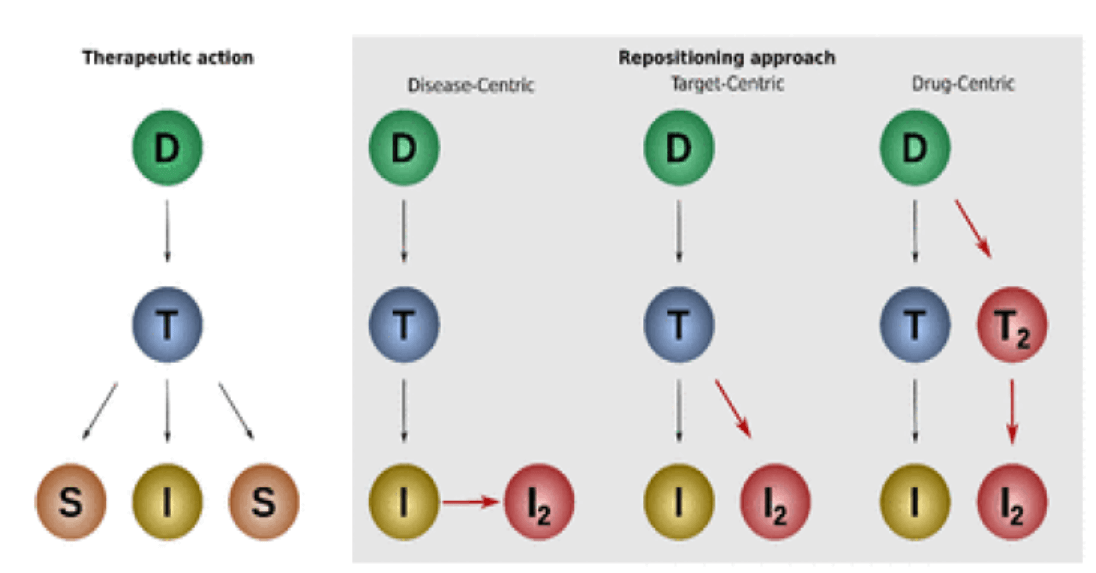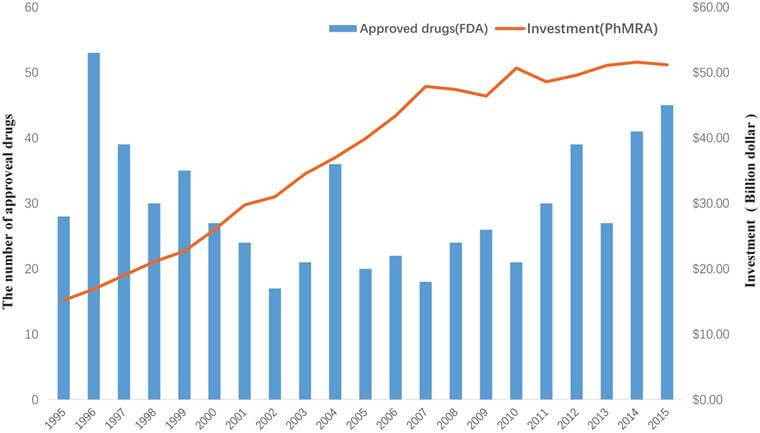Unlocking the Future of Medicine: Using Clinical Trial Information to Forecast Future Therapeutic Indications
In the ever-evolving landscape of medical research and drug development, the ability to predict future therapeutic indications has become a game-changer. By harnessing the power of clinical trial information, researchers and pharmaceutical companies are now able to forecast potential new uses for existing drugs, revolutionizing the way we approach healthcare and treatment options. This article will delve deep into the fascinating world of drug repurposing and how clinical trial data is being leveraged to shape the future of medicine.
The Power of Clinical Trial Data
Clinical trials are the backbone of medical research, providing invaluable insights into the safety and efficacy of new treatments. But what if we could extract even more value from this wealth of information? That’s exactly what researchers are doing by using clinical trial data to predict future therapeutic indications.
Understanding the Goldmine of Information
Clinical trials generate vast amounts of data, from patient demographics and medical histories to detailed outcomes and side effects. This treasure trove of information holds the key to unlocking new possibilities in drug development and repurposing.
The Role of Big Data and AI
With the advent of big data analytics and artificial intelligence, researchers can now sift through enormous datasets to identify patterns and correlations that may have been previously overlooked. This technological revolution has opened up new avenues for drug discovery and repurposing.
The Art of Drug Repurposing
Drug repurposing, also known as drug repositioning, is the process of finding new therapeutic uses for existing drugs. This approach offers several advantages over traditional drug development, including reduced costs, shorter development timelines, and lower risks.
Benefits of Drug Repurposing
- Cost-effectiveness: Repurposing existing drugs can save billions in development costs.
- Time efficiency: The process is typically faster than developing new drugs from scratch.
- Improved safety profile: Existing drugs have already undergone safety testing, reducing risks.
- Expanded treatment options: Patients benefit from new therapeutic applications of known drugs.
Success Stories in Drug Repurposing
Several well-known drugs have found success in treating conditions far removed from their original intended use. For example, sildenafil (Viagra), originally developed for angina, became a blockbuster treatment for erectile dysfunction. Similarly, thalidomide, once withdrawn due to severe side effects, has found new life as a treatment for multiple myeloma.
Leveraging Clinical Trial Information for Forecasting
The process of using clinical trial data to predict future therapeutic indications involves several key steps and technologies. Let’s explore how researchers are turning raw data into valuable insights.
Data Mining and Pattern Recognition
Advanced algorithms and machine learning techniques are employed to sift through vast amounts of clinical trial data, identifying patterns and correlations that may indicate potential new uses for existing drugs. This process involves analyzing various data points, including:
- Patient responses to treatments
- Side effects and adverse reactions
- Biomarker data
- Genetic information
- Drug mechanisms of action
Network-based Approaches
Researchers are increasingly using network-based approaches to understand the complex relationships between drugs, diseases, and biological pathways. By mapping these intricate connections, scientists can identify unexpected links that may lead to new therapeutic applications.
“Network-based approaches have revolutionized our ability to predict drug-disease associations. By visualizing the complex web of interactions within biological systems, we can uncover hidden connections that may lead to groundbreaking discoveries in drug repurposing.” – Dr. Sarah Chen, Computational Biologist at Stanford University
Integrating Multi-omics Data
The integration of multi-omics data, including genomics, proteomics, and metabolomics, provides a more comprehensive understanding of drug-disease interactions. This holistic approach allows researchers to identify potential therapeutic indications that may not be apparent from clinical trial data alone.
Challenges in Forecasting Future Therapeutic Indications
While the potential of using clinical trial information to predict new drug uses is immense, there are several challenges that researchers must overcome.
Data Quality and Standardization
One of the primary challenges in leveraging clinical trial data is ensuring data quality and standardization. Inconsistencies in data collection and reporting across different trials can make it difficult to draw accurate conclusions.
Ethical Considerations
The use of patient data for purposes beyond the original clinical trial raises important ethical questions. Researchers must navigate complex issues of patient privacy and consent when repurposing clinical trial information.
Regulatory Hurdles
Repurposing drugs for new indications often requires additional clinical trials and regulatory approvals. Navigating this process can be time-consuming and costly, potentially slowing down the implementation of new therapeutic applications.
The Future of Therapeutic Indication Forecasting
As technology continues to advance, the field of therapeutic indication forecasting is poised for significant growth and innovation.
Artificial Intelligence and Machine Learning
AI and machine learning algorithms are becoming increasingly sophisticated, allowing for more accurate predictions of drug-disease associations. These technologies have the potential to revolutionize the drug discovery and repurposing process.
Real-world Data Integration
The integration of real-world data from electronic health records, wearable devices, and other sources will provide a more comprehensive picture of drug effects and potential new indications. This wealth of information will enhance the accuracy of therapeutic forecasting models.
Personalized Medicine
As our understanding of individual genetic variations grows, therapeutic indication forecasting will become increasingly personalized. This tailored approach will allow for more precise predictions of drug efficacy and potential side effects for specific patient populations.
Case Studies: Success Stories in Therapeutic Indication Forecasting
Let’s examine some real-world examples of how clinical trial information has been used to successfully predict new therapeutic indications.
Case Study 1: Metformin for Cancer Prevention
Metformin, a widely prescribed diabetes medication, has shown promise in cancer prevention and treatment. Analysis of clinical trial data and epidemiological studies revealed that diabetic patients taking metformin had lower cancer incidence rates. This observation led to further research into metformin’s potential anti-cancer properties.
Case Study 2: Bupropion for Smoking Cessation
Originally developed as an antidepressant, bupropion was found to be effective in helping people quit smoking. This discovery was made when patients in clinical trials for depression reported a decreased desire to smoke. Further studies confirmed bupropion’s efficacy as a smoking cessation aid.
The Impact on the Pharmaceutical Industry
The ability to forecast future therapeutic indications using clinical trial information is having a profound impact on the pharmaceutical industry.
Streamlined Drug Development
By identifying potential new uses for existing drugs, pharmaceutical companies can streamline their development processes and bring new treatments to market more quickly and cost-effectively.
Increased Return on Investment
Drug repurposing offers pharmaceutical companies the opportunity to maximize their return on investment by finding new applications for drugs already in their portfolio.
Collaborative Research Opportunities
The field of therapeutic indication forecasting is fostering increased collaboration between academia, industry, and regulatory bodies. These partnerships are crucial for advancing the science and overcoming challenges in drug repurposing.
Best Practices for Implementing Therapeutic Indication Forecasting
To effectively leverage clinical trial information for predicting future therapeutic indications, organizations should consider the following best practices:
- Invest in robust data management systems
- Develop interdisciplinary teams with expertise in data science, biology, and medicine
- Implement rigorous data quality control measures
- Foster collaborations with academic institutions and research organizations
- Stay up-to-date with the latest advancements in AI and machine learning
- Prioritize ethical considerations and patient privacy
- Engage with regulatory bodies to streamline the approval process for repurposed drugs
The Role of Open Science in Advancing Therapeutic Forecasting
The open science movement is playing a crucial role in advancing the field of therapeutic indication forecasting.
Data Sharing Initiatives
Initiatives promoting the sharing of clinical trial data are enabling researchers to access larger, more diverse datasets for analysis. This increased access to information is accelerating the pace of discovery in drug repurposing.
Collaborative Platforms
Online platforms and communities are facilitating collaboration between researchers worldwide, allowing for the exchange of ideas, methodologies, and findings in therapeutic forecasting.
Ethical Considerations and Patient Privacy
As the field of therapeutic indication forecasting continues to evolve, it’s crucial to address the ethical implications and ensure patient privacy is protected.
Informed Consent
Researchers must ensure that patients are fully informed about how their data may be used for future research and obtain appropriate consent.
Data Anonymization
Robust data anonymization techniques must be employed to protect patient identities while still preserving the value of the clinical trial information.
The Global Impact of Therapeutic Indication Forecasting
The ability to predict new therapeutic indications has far-reaching implications for global health.
Addressing Rare and Neglected Diseases
Drug repurposing offers hope for patients with rare and neglected diseases, where traditional drug development may not be economically viable.
Improving Access to Treatments
By finding new uses for existing drugs, therapeutic indication forecasting can help improve access to treatments, particularly in resource-limited settings.
Key Takeaways
- Clinical trial information is a valuable resource for predicting future therapeutic indications.
- Drug repurposing offers significant advantages in terms of cost, time, and safety.
- Advanced technologies like AI and machine learning are revolutionizing the field of therapeutic forecasting.
- Challenges include data quality, ethical considerations, and regulatory hurdles.
- The future of therapeutic indication forecasting holds promise for personalized medicine and improved global health outcomes.
- Collaboration and open science initiatives are crucial for advancing the field.
- Ethical considerations and patient privacy must remain at the forefront of research efforts.
FAQs
- Q: How accurate are predictions made using clinical trial information?
A: The accuracy of predictions varies depending on the quality and quantity of data available, as well as the sophistication of the analytical methods used. While not perfect, these predictions have shown significant promise in identifying potential new therapeutic indications. - Q: Can therapeutic indication forecasting completely replace traditional drug discovery methods?
A: While therapeutic indication forecasting is a powerful tool, it is unlikely to completely replace traditional drug discovery methods. Instead, it complements existing approaches, offering a more efficient way to identify potential new uses for known drugs. - Q: How long does it typically take to repurpose a drug for a new indication?
A: The time frame for drug repurposing can vary widely, but it is generally much faster than developing a new drug from scratch. Depending on the complexity of the new indication and regulatory requirements, it can take anywhere from 3 to 10 years. - Q: Are there any risks associated with using drugs for new indications identified through forecasting?
A: While repurposed drugs have the advantage of known safety profiles, there are still risks associated with using them for new indications. These risks are typically lower than those associated with entirely new drugs, but additional clinical trials are usually required to ensure safety and efficacy for the new use. - Q: How can small biotech companies or academic institutions participate in therapeutic indication forecasting?
A: Small biotech companies and academic institutions can participate by collaborating with larger pharmaceutical companies, accessing public databases of clinical trial information, and leveraging open-source tools for data analysis. They can also contribute to the field by developing innovative algorithms or conducting focused studies on specific drug-disease interactions.
References
- https://www.ncbi.nlm.nih.gov/pmc/articles/PMC6723336/
- https://www.nature.com/articles/s41586-021-03430-5
- https://www.ncbi.nlm.nih.gov/pmc/articles/PMC3853875/
- https://www.nature.com/articles/nrd.2018.168
- https://www.sciencedirect.com/science/article/pii/S1359644621003639
- https://www.nature.com/articles/s41587-020-0686-x
- https://www.ncbi.nlm.nih.gov/pmc/articles/PMC6380819/
- https://www.ncbi.nlm.nih.gov/pmc/articles/PMC2528204/
























